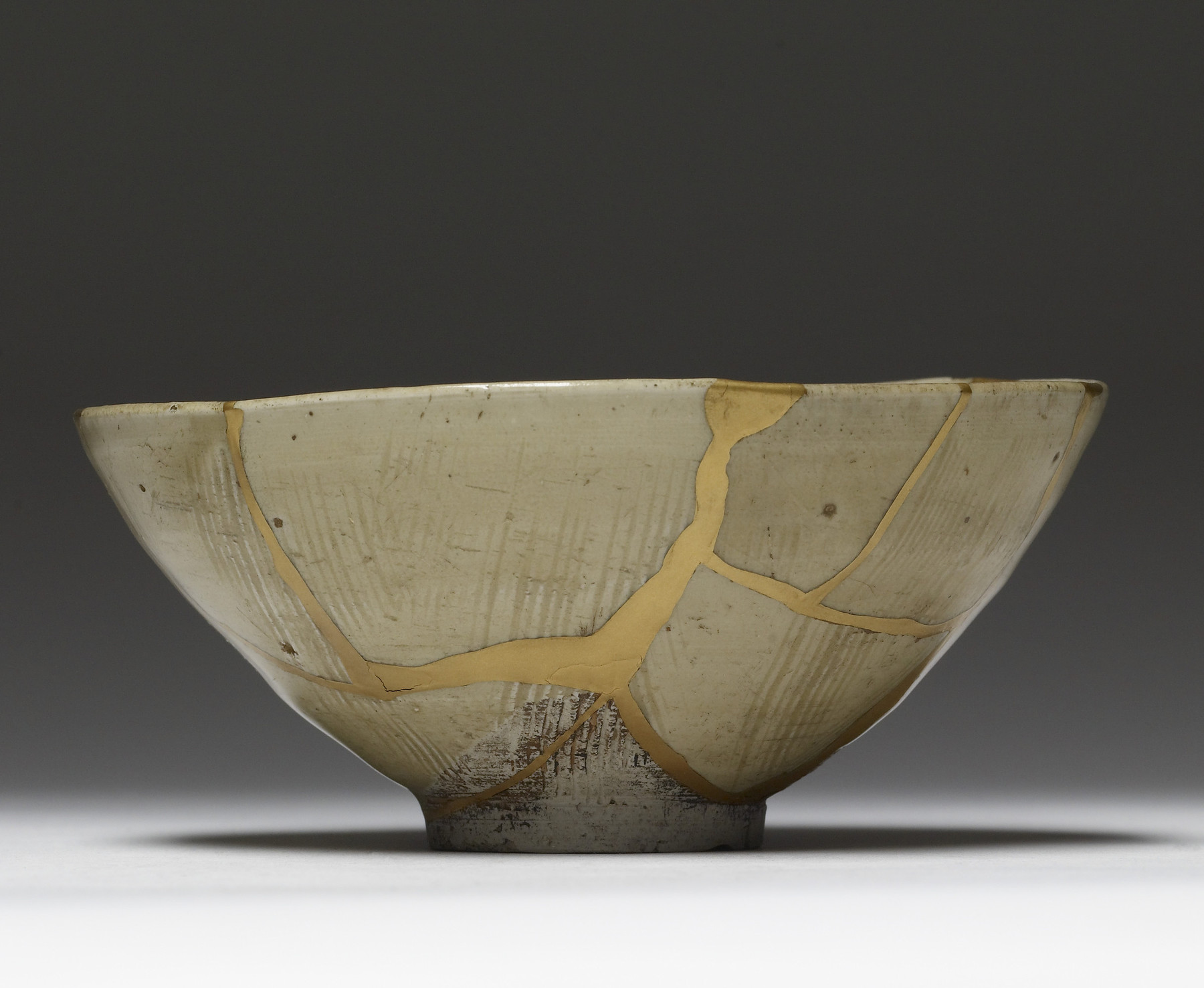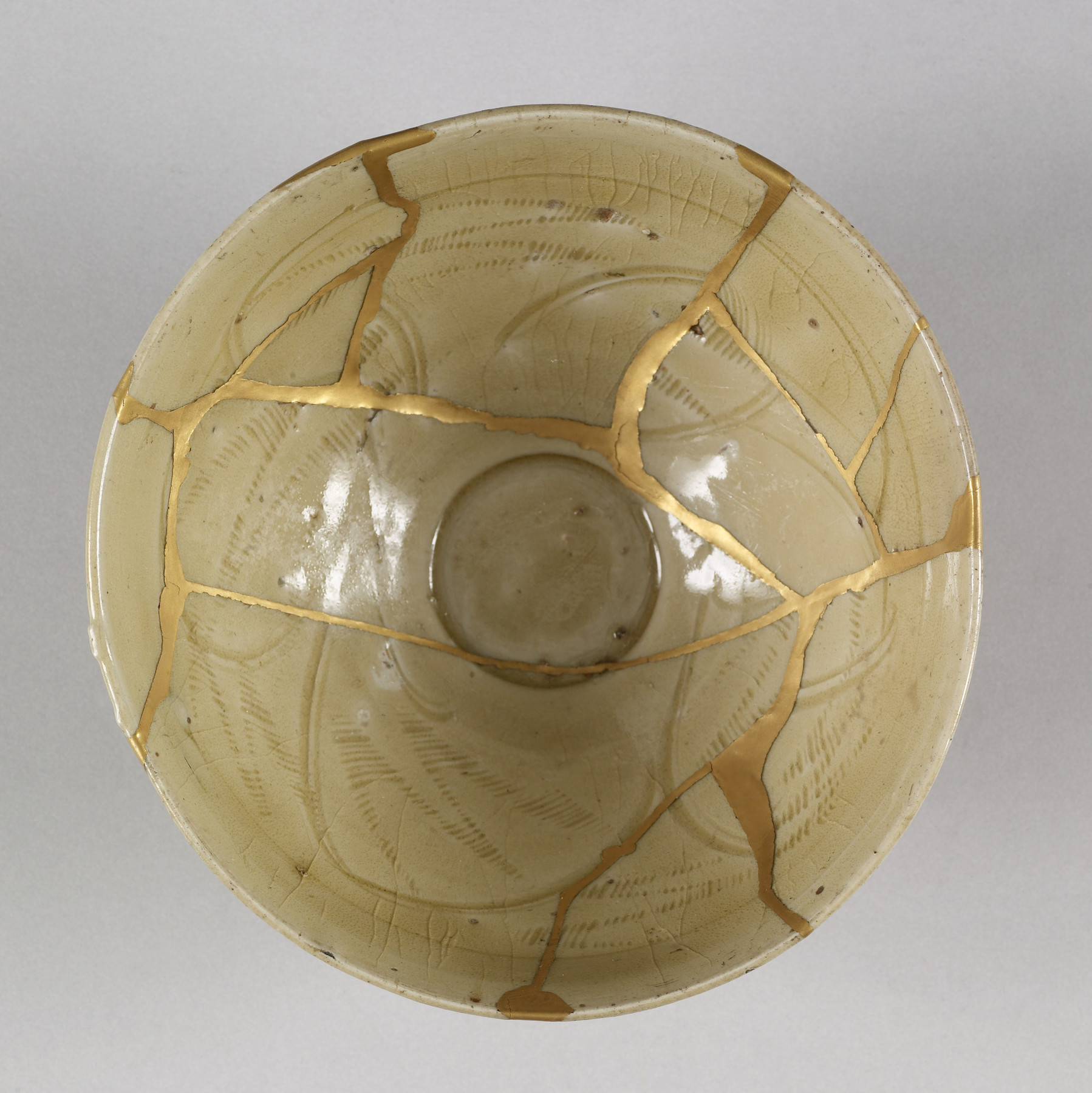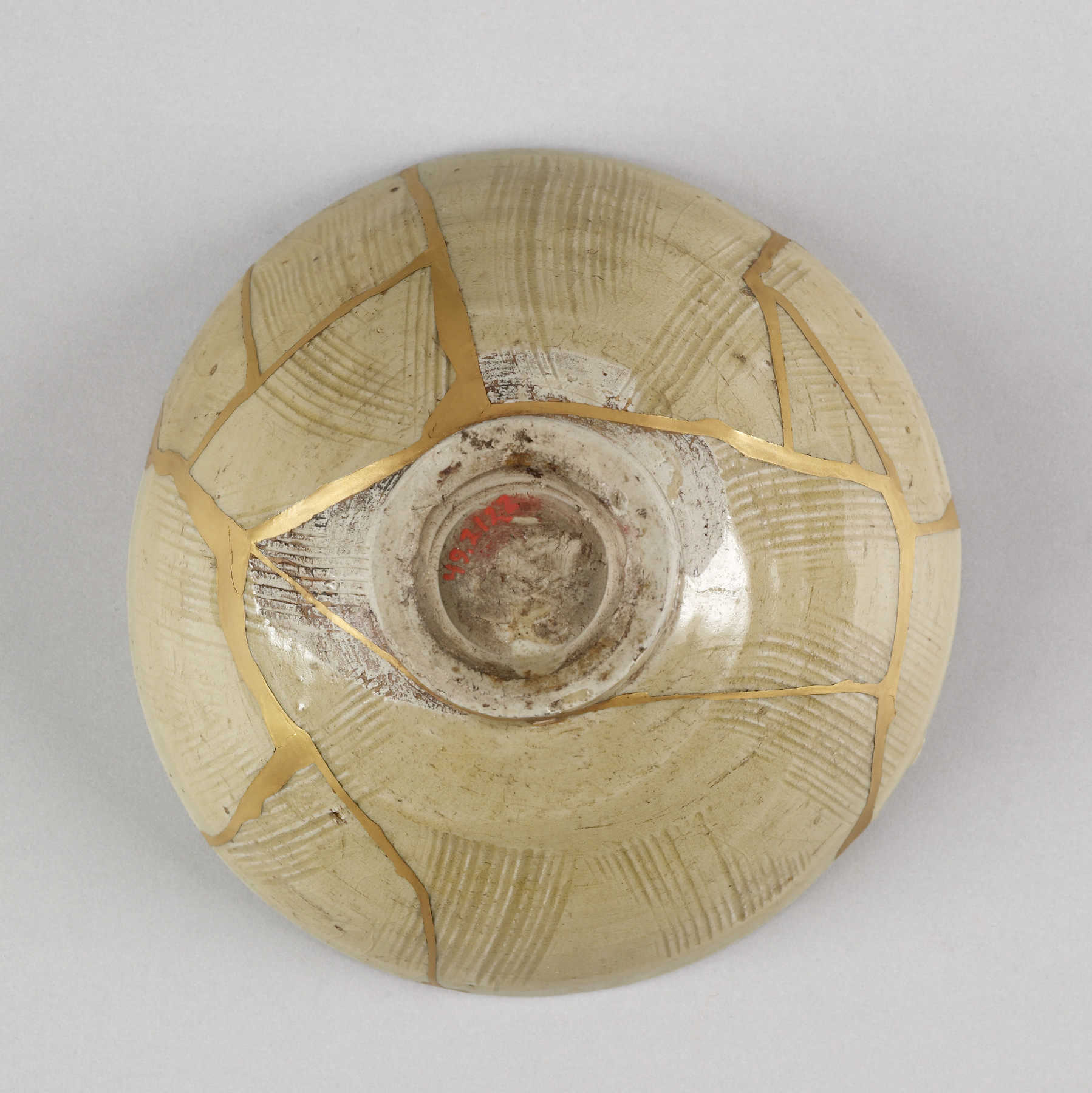Bowl
(China )
Over 500 years ago in Japan, a repair technique was developed that celebrated the beauty of imperfection. Called kintsugi, which translates as “golden joinery,” this technique uses a mixture of lacquer and gold, silver, or platinum to mend an object in a way that highlights (rather than hides) the damage. More than merely a craft technique, kintsugi is a tangible display of the Japanese philosophy of wabi-sabi, a belief in the beauty of imperfection. This Japanese tradition has been applied to ceramics in other parts of East Asia including this stoneware vessel from China.
Provenance
Provenance (from the French provenir, 'to come from/forth') is the chronology of the ownership, custody, or location of a historical object. Learn more about provenance at the Walters.
Acquired by William T. or Henry Walters, Baltimore; by bequest to Walters Art Museum, 1931.
Exhibitions
| 1980-1981 | Masterpieces of Chinese Porcelain. The Walters Art Gallery, Baltimore. |
Conservation
| Date | Description | Narrative |
|---|---|---|
| 11/4/1974 | Treatment | cleaned |
| 9/29/1987 | Examination | other |
Geographies
China (Place of Origin)
Measurements
H: 2 7/16 × Diam: 5 3/16 in. (6.2 × 13.2 cm)
Credit Line
Acquired by William T. or Henry Walters
Location in Museum
Not on view
Accession Number
In libraries, galleries, museums, and archives, an accession number is a unique identifier assigned to each object in the collection.
In libraries, galleries, museums, and archives, an accession number is a unique identifier assigned to each object in the collection.
49.2122














